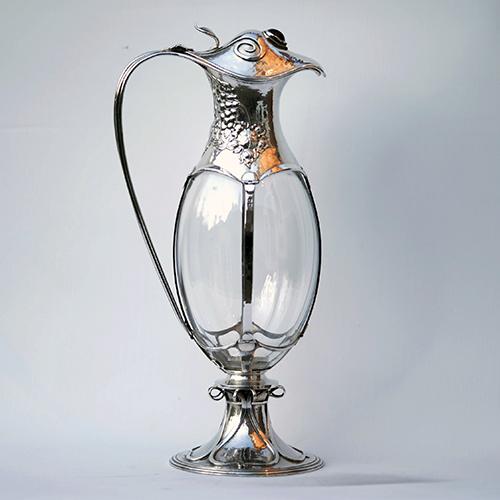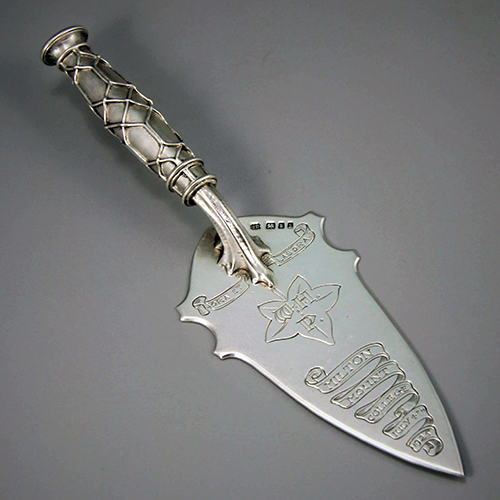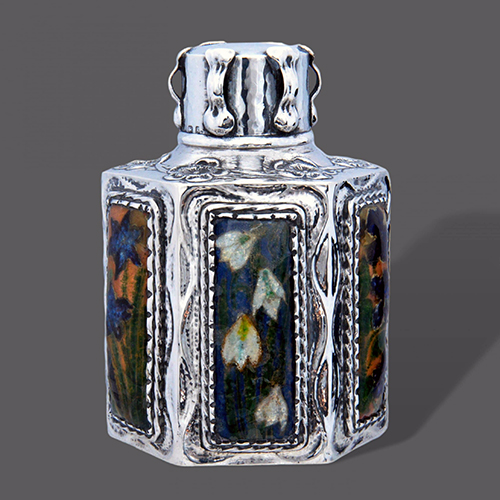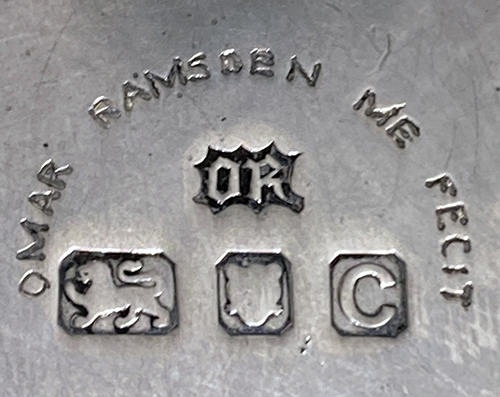

This month marks the 150th anniversary of the birth of Omar Ramsden. Arguably the most eminent silversmith of the British Arts and Crafts movement.
Born in the Sheffield suburb of Walkley in 1873, Omar was the son of Benjamin Ramsden, a silver engraver, and his wife Norah. At the time, Sheffield was the heart of the British cutlery industry, so many households within the community would have been involved in the silver trade in some capacity.
Young Ramsden is said to have been given the rather exotic name Omar after his uncle, who in turn had been named after Omar Pasha, an Ottoman military hero of the Crimean War. Despite running his own business, the Ramsden’s were by no means wealthy, and Omar was apprenticed to a local silversmith at age 15.
His prodigious talent began to emerge after Omar joined evening classes at the Sheffield School of Art. While attending the school, Ramsden forged a lifelong friendship with fellow student Alwyn Carr which would eventually become one of the most successful silver firms of the early 20th century.
The pair quickly developed a friendly but competitive rivalry, that spurred both artists on to greater achievement. So, when Carr won a scholarship to the Sheffield School of Arts in 1893, it was little surprise that Ramsden collected the same award the following year.
 The bursary freed Omar from the shackles of his apprenticeship and presented a precious opportunity to learn from many of the leading silversmiths of the era. During their education Ramsden and Carr attended short courses at the Royal College of Art in London and enjoyed visits to the Victoria and Albert Museum, where appropriately some of their own work resides today.
The bursary freed Omar from the shackles of his apprenticeship and presented a precious opportunity to learn from many of the leading silversmiths of the era. During their education Ramsden and Carr attended short courses at the Royal College of Art in London and enjoyed visits to the Victoria and Albert Museum, where appropriately some of their own work resides today.
It is thought that Alwyn Carr must have subsidised the pair’s lifestyle to some extent since they appeared to live well beyond the modest means of the Ramsden family. In fact, in 1897, the duo even enjoyed a year long tour of Europe to celebrate the end of Carr’s education. On their return Omar was announced as the winner of a competition arranged by the Duke of Norfolk to create a ceremonial mace for the City of Sheffield.
Ironically, the mace itself would be constructed in Ramsden and Carr’s new London studio, at Stamford Bridge, Chelsea, a far less desirable area in the late 19th century than it is today. Indeed, it is said that on the duo’s frequent excursions to the theatre and West End they would carry parts of the mace in their pockets, rather than risk a break-in at the workshop.
There is significant debate as to how much of the finished work is Ramsden’s. For example, the repousse work is of fine quality, which Omar was not known for at the time, unlike Carr. Regardless, the finished mace received wide acclaim and would help cement the pair’s growing reputation.
As orders flooded in, they were forced to take on additional staff to meet demand and were able to relocate to more desirable premises at St Dunstan’s Studios off the Fulham Road.
 Influenced heavily by Celtic and Medieval motifs, Ramsden and Carr’s works presented a welcome change for an audience keen to shrug off the conservative tastes of the Victorian era and embrace the energy of the new 20th century.
Influenced heavily by Celtic and Medieval motifs, Ramsden and Carr’s works presented a welcome change for an audience keen to shrug off the conservative tastes of the Victorian era and embrace the energy of the new 20th century.
In addition to their fashionable home wares, both Omar and Alwyn were Roman Catholics and received many large commissions for ecclesiastic items. These include the magnificent Art Nouveau Monstrance at Westminster Cathedral 1907, and the St Edward the Confessor Chalice at Westminster Abbey 1925.
At the peak of their powers, Carr and Ramsden’s partnership was unexpectedly fractured by the outbreak of War in 1914. Alwyn Carr enlisted with the Artist’s Rifles and would serve until he was wounded and invalided out of the armed services in 1918.
In the meantime, Omar, who continued to oversee the company throughout the conflict, had developed a close friendship with Annie Downs-Butcher. It is understood that Annie exerted a great deal of influence over Ramsden to the extent that, once recovered, Alwyn found himself surplus to requirements within the company, although the duo’s lasting friendship endured.
Omar and Annie shared a strong bond too and when the latter’s husband passed away, she and Omar were married in 1927. A token of their deep affection is illustrated in the beautiful silver girdle which Ramsden made as a wedding gift for his new bride. Decorated with shields for the towns and cities along the Pilgrims Way, a route often walked by the couple, the piece centres on figures of St Christopher carrying the infant Christ and Thomas à Becket. It is currently housed in the permanent collection of the British Museum.
 Annie remained an influential player in the business and continued to run the studios after Omar’s passing in 1939, just a year after the death of Alwyn Carr. One of his final works, The Bluebird of Happiness Bowl, is currently in the collection of their beloved V & A museum. The two small handles adorned with delicate bluebirds emerging from foliage, the base adorned with Omar’s trademark inscription, “Omar Ramsden Me Fecit”, or “Omar Ramsden made me”.
Annie remained an influential player in the business and continued to run the studios after Omar’s passing in 1939, just a year after the death of Alwyn Carr. One of his final works, The Bluebird of Happiness Bowl, is currently in the collection of their beloved V & A museum. The two small handles adorned with delicate bluebirds emerging from foliage, the base adorned with Omar’s trademark inscription, “Omar Ramsden Me Fecit”, or “Omar Ramsden made me”.
Click here to view examples of Ramsden’s work currently available from BADA members.

